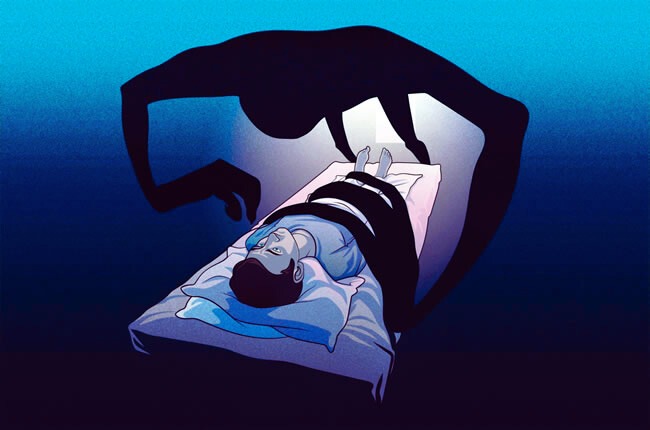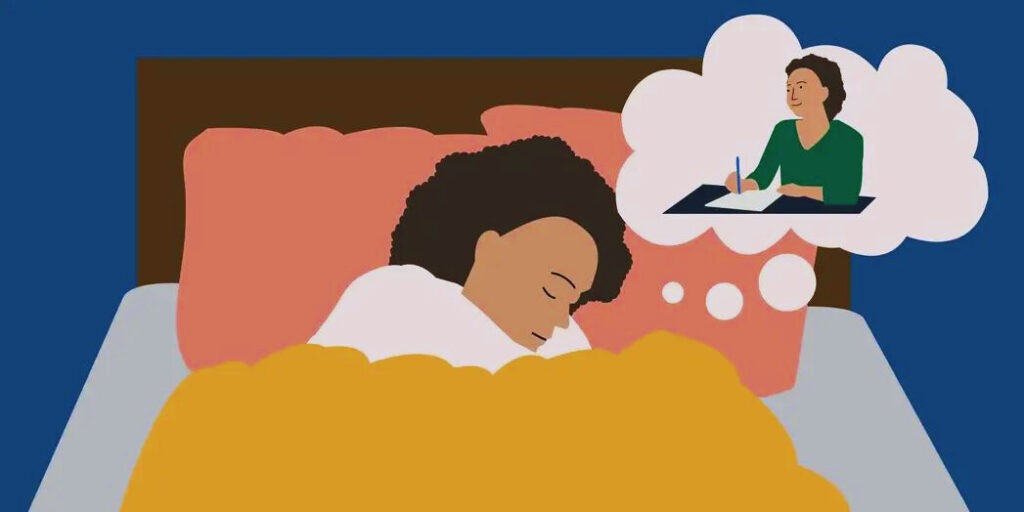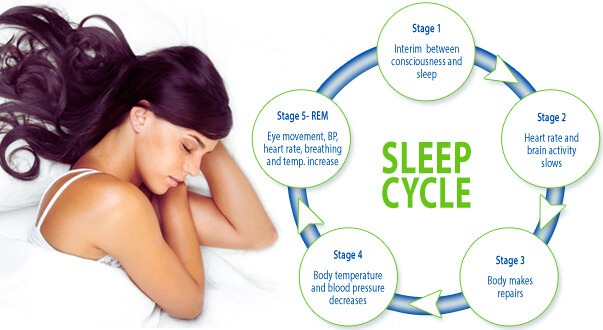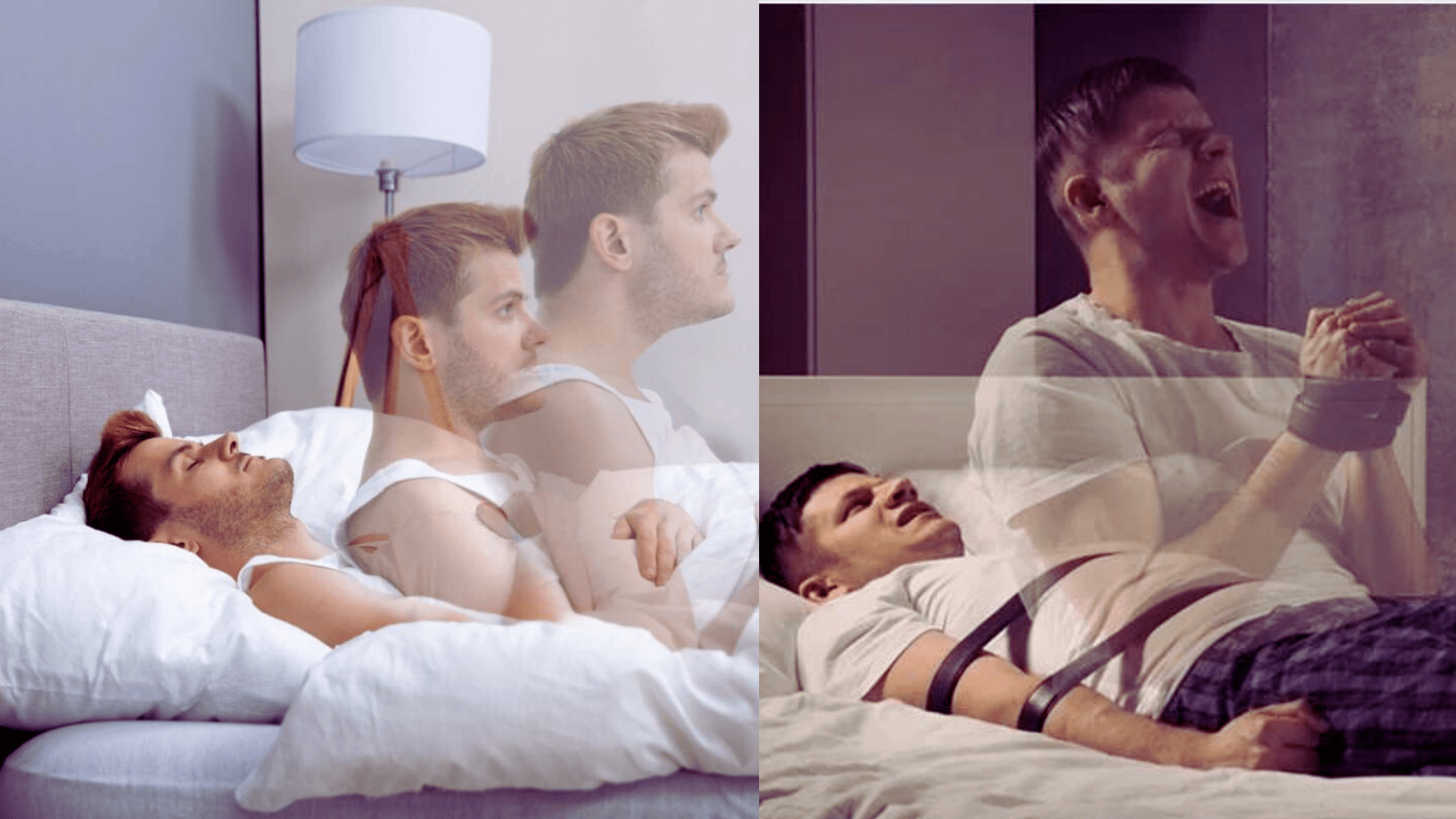Sleep paralysis is a condition characterized by a temporary inability to move or speak while falling asleep or upon waking. This phenomenon occurs when the brain awakens from REM (Rapid Eye Movement) sleep, a phase known for vivid dreaming, but the body remains in a state of muscle atonia, preventing movement. During sleep paralysis, individuals may experience hallucinations, sensations of pressure, or a feeling of being choked, which can be distressing. It’s not considered harmful and usually lasts from a few seconds to a few minutes.
What is Sleep Paralysis?

Sleep Paralysis is a temporary and involuntary inability to move or speak that occurs when a person is falling asleep or awakening. This phenomenon bridges the gap between wakefulness and sleep and is characterized by a conscious awareness of one’s surroundings but with an inability to move any part of the body. It often occurs during transitions into or out of REM (Rapid Eye Movement) sleep, a stage of sleep associated with vivid dreams. During these episodes, individuals are fully conscious but find themselves incapable of voluntary movement, which can be a distressing experience. Although sleep paralysis can be frightening, it’s generally considered harmless.
The Science Behind It
The science behind sleep paralysis lies in the intersection of sleep physiology and neurological processes. During REM (rapid eye movement) sleep, the brain enters a highly active state, similar to when awake, which is when most dreaming occurs. A key feature of REM sleep is muscle atonia, a natural paralysis that prevents the body from acting out dreams. Sleep paralysis occurs when this atonia persists even as the brain awakens, leading to consciousness without the ability to move. This phenomenon can happen during transitions in and out of REM sleep, specifically at sleep onset or upon awakening. Emotional stimuli can trigger cataplexy (a sudden loss of muscle tone), linked to the mechanisms causing the muscle atonia of REM sleep. Neurophysiological alterations, including changes in gamma-aminobutyric acid (GABA), a neurotransmitter responsible for inhibiting nerve transmission in the brain, contribute to the onset of sleep paralysis.
REM Sleep

REM (Rapid Eye Movement) sleep plays a central role in sleep paralysis. During REM sleep, the brain becomes highly active, a phase closely associated with vivid dreaming. A hallmark of this sleep stage is muscle atonia, a state where the brain sends signals to inhibit muscle movement, effectively paralyzing the skeletal muscles to prevent the body from acting out dreams. Sleep paralysis occurs when this mechanism of muscle atonia persists even as the individual transitions from the REM stage to wakefulness. This results in the person regaining consciousness but remaining unable to move for a short period. Two powerful brain chemical systems work in tandem to maintain muscle paralysis during REM sleep, ensuring that dreams are not physically acted out. Disruptions in the transition phases into or out of REM sleep can lead to sleep paralysis, where the mind awakens but the body remains in the paralyzed state characteristic of REM sleep.
Brain Functions

Sleep paralysis is a phenomenon where the brain plays a central role, particularly through its management of sleep cycles and muscle control. As a person transitions between stages of sleep, especially in and out of REM (Rapid Eye Movement) sleep, the brain undergoes various changes. During REM sleep, the brain sends signals that lead to muscle atonia, a state of muscle relaxation that prevents physical movement during dreaming. This is a protective mechanism to prevent injury from acting out dreams. Sleep paralysis occurs when this state of atonia persists even as the individual starts waking up, leading to a conscious but temporarily immobilized state. The experience can be unsettling, as the brain is awake and aware, but the body remains in the paralyzed state of REM sleep. This mechanism is crucial for understanding how disruptions in normal sleep architecture, such as those occurring with sleep paralysis, are directly tied to brain function during the sleep cycle.
Common Triggers
Stress
Stress significantly impacts sleep quality and has been associated with sleep disorders, including sleep paralysis. Research indicates that both acute and chronic stress can negatively affect sleep quality, potentially leading to sleep disturbances like sleep paralysis. Poor sleep quality itself may act as a mediator in the relationship between stress and sleep paralysis, suggesting that the way stress deteriorates sleep quality could increase the likelihood of experiencing sleep paralysis. Additionally, studies have shown that poor sleep quality, along with anxiety symptoms and lifetime exposure to threatening events, is an independent predictor of sleep paralysis. This relationship between stress, poor sleep quality, and sleep paralysis highlights the importance of managing stress to maintain healthy sleep patterns and minimize the risk of sleep paralysis.
Sleep Schedule Disruptions
Irregular sleep patterns have been linked to a variety of health issues, emphasizing the importance of maintaining a regular sleep schedule. Studies have identified connections between inconsistent sleep schedules and increased risks of metabolic disorders, including obesity, diabetes, and high cholesterol. Furthermore, irregular sleep patterns can contribute to poor mood regulation and a higher risk of developing symptoms of depression. These findings underscore the critical role that a consistent sleep schedule plays in overall health, not only affecting physical well-being but also mental health.
Lifestyle and Environment
Lifestyle choices and the environment significantly contribute to the occurrence of sleep paralysis and overall sleep quality. Poor sleep habits, such as irregular sleep schedules, and stress are notable factors that can increase the risk of experiencing sleep paralysis. Additionally, environmental factors, including one’s sleeping environment, play a crucial role in the quality of sleep one can achieve. Improving these aspects—by adopting healthier sleep habits, managing stress effectively, and optimizing the sleeping environment—can help reduce the risks associated with sleep paralysis and enhance sleep quality.
Symptoms and Experiences
Hallucinations
During episodes of sleep paralysis, individuals may experience three primary types of hallucinations:
- Intruder Hallucinations: These involve the perception of a threatening presence in the room. People might see or sense an intruder or even hear footsteps or whispered voices.
- Chest Pressure Hallucinations: Often described as feeling an immense weight on the chest, making breathing difficult. This can also be accompanied by physical sensations, such as touching or grabbing.
- Visual or Auditory Hallucinations: These can occur during the hypnagogic (falling asleep) or hypnopompic (waking up) states and may include vivid and often bizarre experiences. They might include seeing shapes, patterns, figures, or hearing sounds, music, or voices.
Inability to Move
The sensation of being unable to move, commonly experienced during sleep paralysis, occurs when a person transitions between stages of wakefulness and sleep. During REM (Rapid Eye Movement) sleep, the body naturally inhibits movement to prevent the acting out of dreams. Sleep paralysis happens when this mechanism persists upon awakening, leaving the individual fully conscious but temporarily immobilized. This condition can be alarming but is generally not indicative of a serious medical issue. Factors like insomnia, narcolepsy, PTSD, generalized anxiety disorder, and panic disorder can increase the likelihood of experiencing sleep paralysis.
Who is at Risk?
Individuals more prone to episodes of sleep paralysis include those with anxiety disorders, poor sleep hygiene, and a history of sleep paralysis in the family, indicating a potential genetic predisposition. Factors that significantly increase the risk include stress, disrupted sleep schedules (such as due to jet lag or pulling all-nighters), lack of sleep, and conditions like narcolepsy. Additionally, environmental and lifestyle factors, such as irregular sleeping patterns and psychological stress, also contribute to the likelihood of experiencing sleep paralysis.
How to Prevent It
Improve Sleep Hygiene
Improving sleep hygiene involves adopting habits and creating an environment that promotes restful sleep. Here are practical steps based on the information provided:
- Stick to a Consistent Sleep Schedule: Go to bed and wake up at the same times every day, even on weekends.
- Create a Restful Environment: Ensure your bedroom is quiet, dark, and at a comfortable temperature.
- Limit Exposure to Screens Before Bed: Reduce blue light exposure from phones, computers, and TV screens at least an hour before bedtime.
- Engage in Relaxing Activities: Incorporate relaxing activities into your evening routine, such as reading, taking a bath, or meditation.
- Avoid Stimulants: Limit caffeine and nicotine intake, especially in the hours leading up to bedtime.
- Be Mindful of Naps: If you must nap, keep it short (20-30 minutes) and avoid napping late in the day.
Stress Managemen
Effective stress management involves a variety of strategies to cope with stress and maintain overall well-being:
- Identify Stressors: Recognize what triggers your stress to manage it more effectively.
- Practice Relaxation Techniques: Engage in meditation, deep breathing exercises, or progressive muscle relaxation to reduce stress levels.
- Stay Physically Active: Regular exercise can help lower stress and improve your mood.
- Maintain a Healthy Diet: Eating a balanced diet supports your body’s ability to cope with stress.
- Get Enough Sleep: Ensure you’re getting sufficient rest to recover from daily stress.
- Set Realistic Goals: Manage your expectations and set achievable goals to reduce feelings of overwhelm.
- Connect with Others: Share your feelings with friends, family, or support groups to alleviate stress.
- Take Time for Hobbies: Engage in activities you enjoy to relax and take your mind off stressors.
- Limit Screen Time: Reduce exposure to devices and social media that may increase stress.
- Seek Professional Help: If stress becomes overwhelming, consider seeking the advice of a mental health professional.
Consult Healthcare Providers
Seeking professional help for sleep paralysis is advisable under certain circumstances:
- Frequent Episodes: If sleep paralysis occurs often and disrupts your sleep regularly.
- Severe Anxiety or Fear: When the fear of sleep paralysis significantly impacts your mental health or leads to fear of going to sleep.
- Daytime Sleepiness: Experiencing excessive sleepiness during the day, which may indicate an underlying sleep disorder such as narcolepsy.
- Struggling to Move or Speak for Extended Periods: While sleep paralysis usually lasts a few seconds to a few minutes, if it feels prolonged or particularly distressing, it’s important to seek advice.
- Sleep Disruption: If symptoms of sleep paralysis are causing significant disruption to your normal sleep patterns, leading to insomnia or fragmented sleep.
- Overall Health Concern: Anytime sleep paralysis raises concerns about your overall health and well-being.
In such cases, a healthcare provider can offer diagnoses, support, and treatment options tailored to individual needs, potentially including referrals to sleep specialists or therapists.
Conclusion
Sleep paralysis can be a disconcerting experience, characterized by the temporary inability to move or speak while falling asleep or upon waking. Personal narratives and scientific research alike contribute to our understanding of this phenomenon, revealing both the fear it can induce and its potential as a gateway to unique states of consciousness, such as out-of-body experiences or lucid dreaming.
Those who experience sleep paralysis, know that while it can be frightening, it is generally harmless and can be managed with understanding and strategies to improve sleep health. Embracing the knowledge of what it is and recognizing its temporary nature can be empowering. For some, exploring this state consciously offers a path to extraordinary dream experiences. Remember, you’re not alone in this experience, and there’s a community and professionals ready to support you.
Read also: What is UFL Football?
FAQs
Q. Is sleep paralysis dangerous?
No, sleep paralysis is not harmful. It’s a benign condition, albeit a frightening experience.
Q. Can sleep paralysis cause physical harm?
Despite the intense fear it can provoke, sleep paralysis does not cause physical harm or pose health risks.
Q. How long does sleep paralysis usually last?
Sleep paralysis episodes typically last from a few seconds to a few minutes.
Q. Can everyone experience sleep paralysis?
Yes, anyone can experience sleep paralysis, though some people may be more susceptible than others.
Q. Is it possible to prevent sleep paralysis?
While there’s no surefire way to prevent sleep paralysis, improving sleep hygiene, managing stress, and consulting healthcare providers when necessary can significantly reduce its occurrence.




